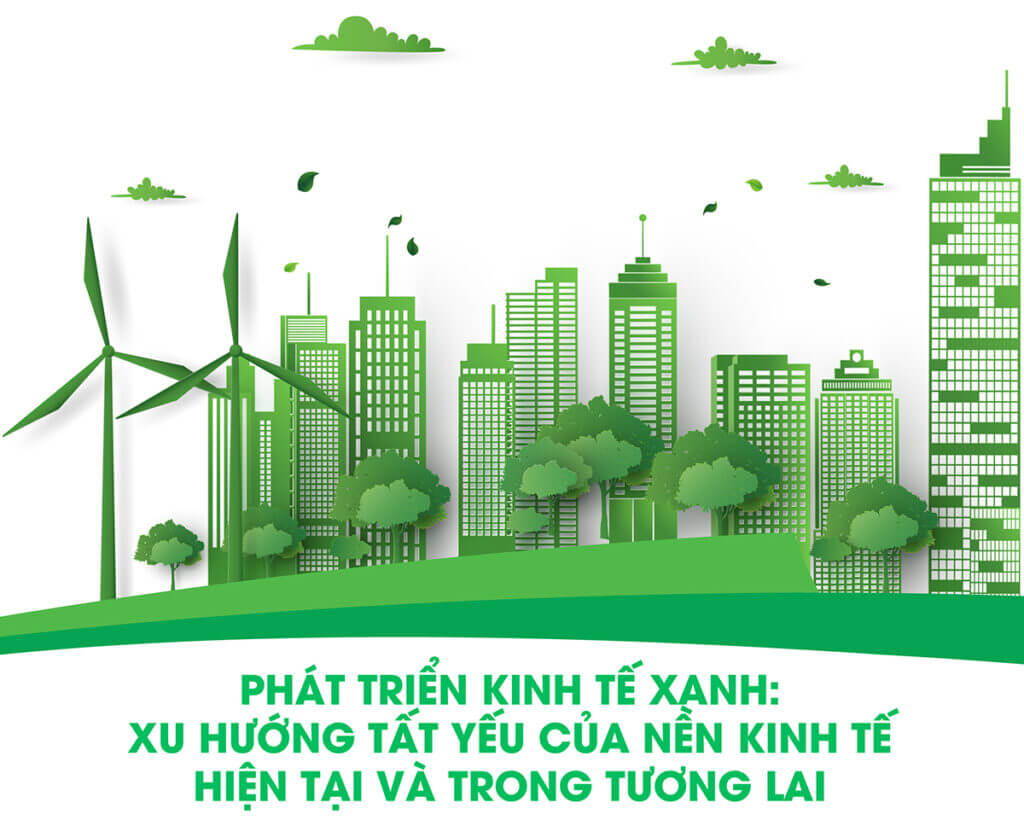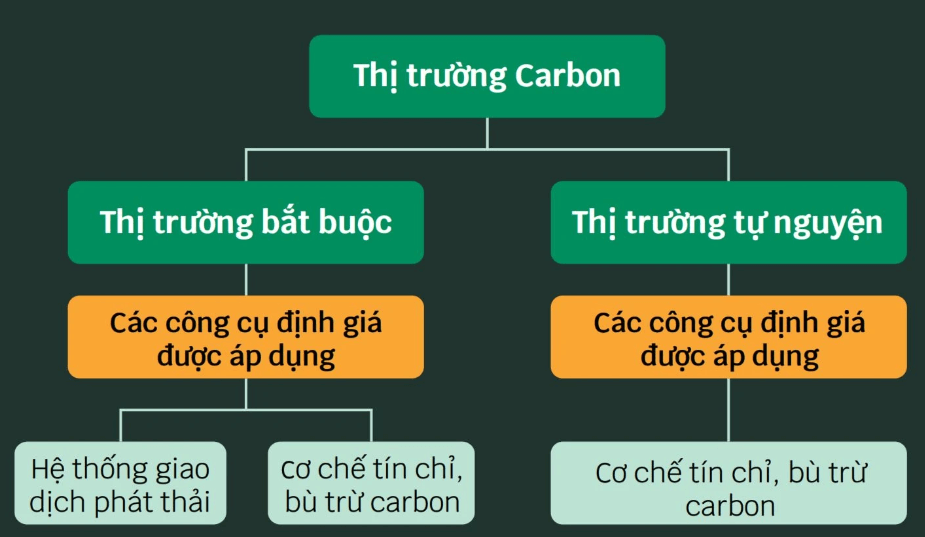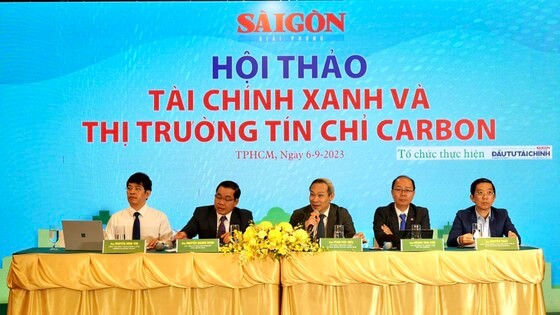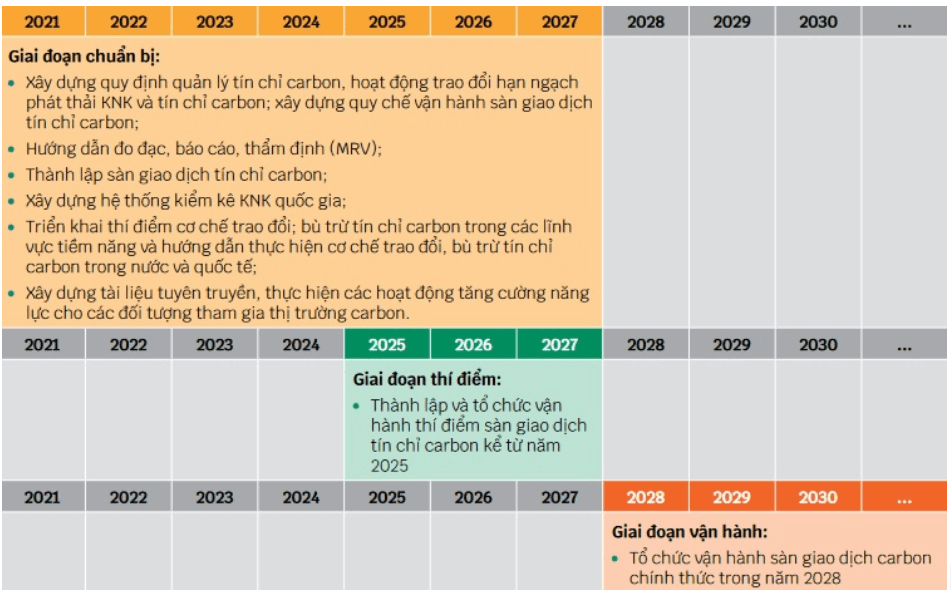“Green Economy” with"Carbon Credit Market” are financial mechanisms that strongly contribute to minimizing the impact of climate change and addressing environmental challenges. This parallel connection will help accelerate the transition to a more sustainable green economy following global trends. Join iLotusLand to initiate the movement to develop the Carbon credit market in Vietnam.
Green Economy – Sustainable direction
Climate change is currently causing a number of negative and complex impacts. The world is increasingly warming at a rapid pace, not only causing temperatures to rise and sea levels to rise, but also making natural disasters more volatile, more frequent, and more unusual. In that context, developing "Green Economy" becomes an inevitable trend in each country.
According to the World Bank, climate change will reduce Vietnam's GDP by 3.5% by 2050. As one of the countries vulnerable to climate change and natural disasters, plus an economy with With the highest carbon emission intensity in Asia, Vietnam identifies green economic development as a mandatory requirement. This is the path to adapt and minimize the impact of climate change.

Why do businesses have to control emissions?
The economic revolution has produced a huge volume of industrial products to serve domestic and foreign consumption. But this problem causes huge environmental pollution problems, especially in terms of surrounding air quality. Therefore, if there are no practical measures, the air around us will become increasingly worse and directly affect human health.
The nature of the emission control system is to force businesses to increase investment in technology and production to reduce emissions in the long term or have a mechanism for businesses to optimize emissions reduction costs if it is difficult to invest in the long term. Short-term. Inventorying emission sources is often very important for establishments and businesses with high levels of emissions causing environmental pollution.
Carbon credit market – Prospects for a circular green economy
Carbon Market? This term has recently become more popular and well known. Not only people working in the field of production and environment, but also becoming more widely known. So why has this term become a popular topic of discussion globally? Let's learn a little about this term with iLotusLand!
Carbon credits are an important concept for minimizing human impact on ecosystems. The carbon credit market is the exchange, purchase and sale of credits between units, organizations and businesses, with the common goal of reducing greenhouse gas emissions and protecting the environment. Participating in the carbon market can help businesses contribute to activities that reduce greenhouse gas emissions, reduce the impact of climate change and environmental protection goals.
-
Carbon Credits
Carbon credits are licenses or certificates that allow their holders (e.g. companies, industrial parks) to emit CO2 or other greenhouse gases. Trading CO2 emissions or carbon trading on the market is done through credits, each credit limits emissions to one ton of CO2. The ultimate goal of carbon credits is to reduce greenhouse gas emissions into the atmosphere.
-
Carbon Market
The carbon market originates from the United Nations Kyoto Protocol on climate change, adopted in 1997. Accordingly, each company, industrial park, and manufacturing plant has a limit on the amount of carbon greenhouse gas emissions into the environment. If it is higher than the prescribed level, these units will have to buy additional carbon credits to not violate general regulations on environmental protection. Conversely, if actual emissions are less than the limit, that unit can sell unused carbon credits to other units.
In short, the Carbon Credit Market is a transaction system for buying, selling and exchanging carbon credits between companies, units, organizations or between countries participating in the market. The carbon market is divided into two types, including mandatory and voluntary markets.

Basis for forming the Carbon credit market
According to many air environment monitoring results, dust concentrations and toxic emissions in industrial parks and manufacturing plants still tend to increase sharply. Not to mention the monitoring process in our country is carried out by sampling and analyzing in the laboratory with a frequency of 2-6 times/year. Therefore, businesses need to invest in different treatment technologies and require design, installation and operation requirements to suit the characteristics of the waste source. It is necessary to invest in a network of continuous automatic air environmental monitoring stations to be able to control and limit sources of toxic emissions into the environment.
By building and operating a domestic carbon market, Vietnam will seize opportunities in effectively reducing carbon emissions, increasing compatibility with international carbon pricing mechanisms, creating opportunities Linking with the world and regional carbon markets as well as increasing the competitiveness of Vietnamese products in the international market.
Workshop "Green Finance and Carbon Credit Market"
At the Conference “Green Finance and Carbon Credit Market” Taking place on September 6, 2023, organized by Saigon Giai Phong Newspaper, experts have pointed out that, in order to solve the problem of lack of resources for green growth, responding to climate change. The workshop mentioned that developing the green financial market and the Carbon credit market will be priorities to be implemented. This helps accelerate the transition to a sustainable green economy following global trends, promoting environmental protection in parallel with digital economic development.

Vietnam will officially operate the Carbon credit exchange
It is expected that in the future, according to the domestic Carbon market roadmap, it will be piloted from 2025, officially operating from 2028. Each year, Vietnam will have about 10.8 million voluntary Carbon credits provided and distributed. accompanied by a large need for exchange and purchase. The formation of the Carbon market helps our country seize opportunities in effectively reducing Carbon emissions, increasing compatibility with international Carbon pricing mechanisms.
Currently, there are no issued credits available for trading on the exchange, so Carbon credit projects in Vietnam are mostly implemented through pre-purchase contracts, meaning the party in need will place an order. The early implementation of this market brings many benefits to businesses as well as making an important contribution to development and environmental protection.
At the 2021 United Nations Climate Change Summit (COP26), Vietnam made commitments to respond to climate change. Therein lies the goal “Net Zero Emissions – Net Zero by 2050”. To effectively implement commitments, countries, companies and businesses need to have methods to remove the same amount of carbon emitted, or use carbon capture and storage technology, removing carbon at the same time. emission sources to comply with legal regulations, contributing to raising awareness and responsibility;

Participants in the Carbon credit market
The first regulations in the legal framework governing the carbon credit market mention domestic carbon market participants including organizations, households, individuals, and communities. This is the basis for expanding the space for the future carbon market. However, it is easy to see that the subjects most affected when participating in this market are large greenhouse gas emitters.
iLotusLand actively participates in the Carbon credit market
Reasons why companies and businesses should participate in the Carbon credit market
Reducing emissions not only aims to minimize harm to the environment and move towards sustainable development, but also to meet national green standards. Carbon markets are becoming increasingly popular because they achieve effective emissions reductions and allow businesses to be flexible and proactive in choosing measures to comply with emissions quotas, thereby bringing efficiency. cost-effective in reducing emissions.
To be able to adapt and effectively participate in the carbon market, businesses need to master the legal regulations on carbon market development, in order to proactively balance capacity and readiness to participate in the market when going forward. into operation, especially registering to participate in the carbon credit exchange.
iLotusLand organizes the Workshop “Carbon Credits and Green Economy”
iLotusLand has researched carefully and decided to be the organizer of the workshop: Sharing about "Carbon Credits and Green Economy" to be able to better understand “Carbon Credits” What role does it play in the economy?Green Economy”. Here, companies and businesses can both discuss and have their concerns about the Carbon credit market answered. Readers, if you are interested in the seminar, please follow and accompany iLL to know more about the information about the seminar event we are about to organize!
iLotusLand wishes to introduce and share cooperation with businesses in need, thereby creating connections and cooperation between businesses and the government, striving to promote carbon neutrality in the future and provide solutions. reduce carbon emissions, reduce risks for businesses, factories, and industrial parks, contributing to protecting a green, clean, and beautiful environment.
Accompany iLotusLand to develop the Green Economy in the most comprehensive way with the message: “Going in the same direction – receiving many benefits!
For further information, please contact:
Email: info@ilotusland.com.
Hotline: +84 909 403 778
Facebook: iLotusLand – Leading in Industrial IoT Solutions
Linked in: iLotusLand – The 1st IoT Platform in Vietnam





